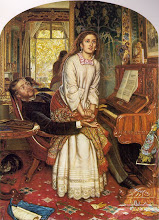When I was little, I had a beloved LP, “Burl Ives Sings The Little White Duck.” There was one song on it that I particularly loved, “Buckeye Jim,” a beautiful, tuneful, gently-strummed song that in Ives’s high, light tenor sounded like the sweetest melody ever. This is one of the few favorite LPs from my childhood that have been released on CD, and I got it for my son. He listens to it as if mesmerized, and also loves “Buckeye Jim.”
The only things I knew about Burl Ives growing up were that he was the singing snowman in “Rudolf the Red-Nosed Reindeer,” which came on TV every Christmas, and, more importantly, that he had “named names” before HUAC, which trumped everything else if you grew up in my family. But I was allowed to have that LP anyway, so perhaps this was a rare instance in which parenting took precedence over politics.
Much later, I found out that the most famous name he had named when he was subpoenaed was that of Pete Seeger (we had some of his children’s records too, of course). Evidently Seeger forgave him; they appeared together onstage in 1993 at a benefit concert, before Ives succumbed to cancer a couple of years later.
John Rockwell, the former chief arts critic of the New York Times, said of Burl Ives's voice that “[it] had the sheen and finesse of opera without its latter-day Puccinian vulgarities and without the pretensions of operatic ritual. It was genteel in expressive impact without being genteel in social conformity. And it moved people.”
I’m about to post a really dated and corny but also interesting and nice clip of Ives singing a white gospel song.
Incidentally, the star of one of my other favorite childhood recordings, Jack Gilford, who narrated “Songs and Hums of Winnie-the-Pooh” (strictly pre-Disney), was also blacklisted in the Red Scare of the 1950s.
Subscribe to:
Post Comments (Atom)











No comments:
Post a Comment